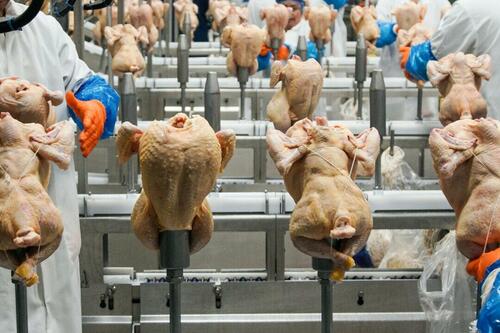Shōwa Day 2025: Embracing Japan’s Heritage and Economic Momentum Ahead of Golden Week
Tháng 4 28, 2025
Navigating Tariff Hikes: How U.S. Trade Policies Reshape Chinese Manufacturing Strategies
Tháng 4 28, 2025USDA Withdraws Proposed Salmonella Regulation: Addressing Public Health Concerns
In a significant move, the United States Department of Agriculture (USDA) announced the withdrawal of its proposed rule aimed at limiting Salmonella levels in raw poultry. The announcement, made between April 24-25, 2025, has already generated substantial discourse among health professionals, regulators, and the public alike. This article delves into the details of the proposed regulation and its subsequent withdrawal, shedding light on the implications for public health and food safety.
Proposed Rule Overview
The original proposal sought to classify poultry that tested above 10 colony-forming units per gram (CFU/g) of Salmonella, particularly those containing high-virulence strains, as adulterated. Such a classification would trigger mandatory recalls of affected products, potentially reshaping the landscape of poultry safety standards in the United States. The USDA intended to implement rigorous measures, including testing for six harmful Salmonella serotypes and enforcing enhanced pathogen-control procedures within slaughterhouses. This comprehensive approach aimed to combat the growing concerns around Salmonella-related infections associated with poultry consumption.
Reasons for Withdrawal of the Proposal
The withdrawal of this crucial proposal has raised eyebrows, particularly as it came after receiving over 7,000 public comments. The USDA’s Food Safety and Inspection Service (FSIS) cited the overwhelming response as a significant factor in their decision. The agency indicated plans to reassess current standards while ensuring that existing regulations remain unchanged for the time being. Critics of the withdrawal argue that it represents a step backward in the fight against foodborne illnesses, particularly those attributable to poultry.
Impacts on Public Health
The health context around Salmonella and poultry is alarming; approximately 1.35 million infections occur annually in the United States, with raw poultry linked to around 167,000 cases each year. According to CDC data, annual estimates suggest that infections from chicken contribute to 125,000 cases, while turkey is responsible for an additional 43,000 infections. The proposed regulation aimed to mitigate these staggering statistics by implementing stricter controls and protocols within the poultry industry.
The significance of this withdrawal extends beyond raw poultry safety. It raises questions about the effectiveness of current food safety measures and the government’s role in protecting public health. Advocacy groups and health experts are concerned that without a robust framework to address Salmonella contamination, the risk of outbreaks may only increase.
Conclusion
As the USDA grapples with the implications of its decision to withdraw the proposed Salmonella regulation, the focus remains on the future of poultry safety standards in the United States. Stakeholders from various sectors are calling for a renewed commitment to public health, emphasizing the need for comprehensive measures that can effectively reduce the risk of Salmonella-related infections. With the agency planning a reassessment of its guidelines, it remains to be seen how the discourse around poultry safety will evolve in the coming months. The situation underscores a critical intersection of food safety, public health policy, and regulatory action that warrants ongoing attention.

